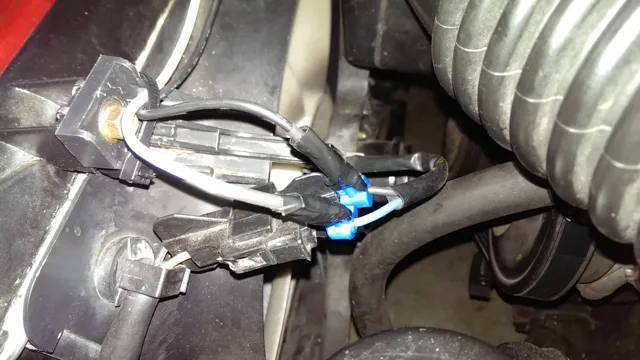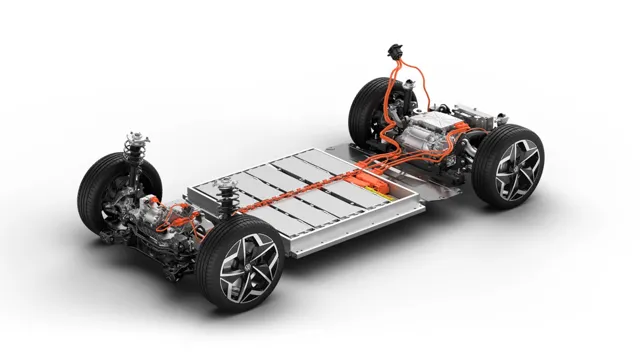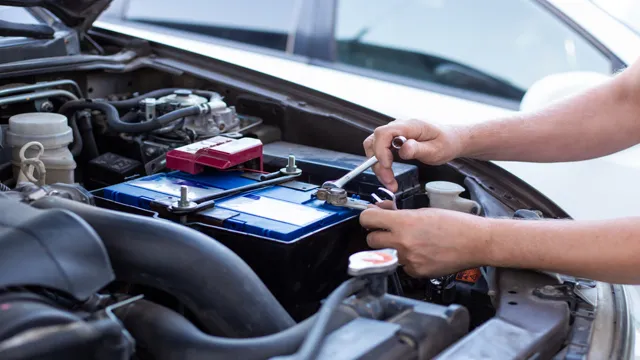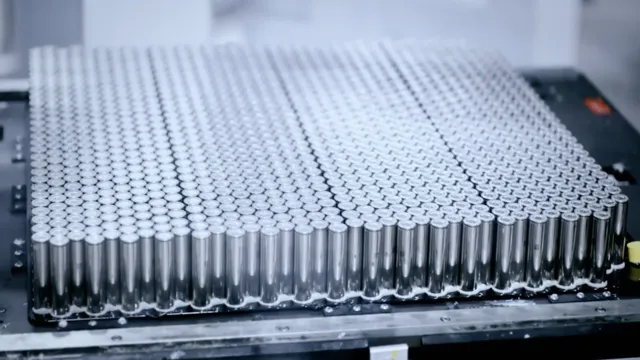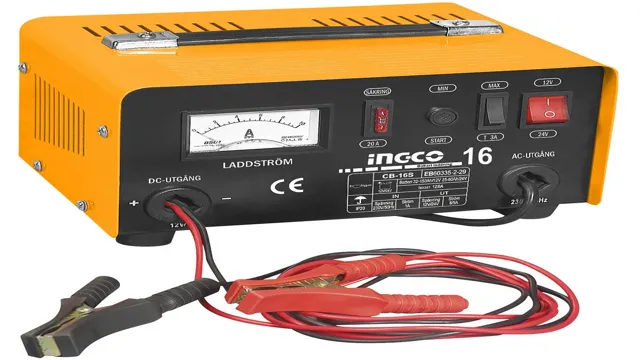Secure Your Car Battery: Discover Whether Wrapping Car Battery Cables in Electrical Tape is a Safe and Effective Solution
Car batteries are a vital component of any vehicle, responsible for powering the essential electrical systems such as headlights, air conditioning, and the stereo. However, if the battery cable becomes damaged or starts to degrade, it can cause problems with the performance of your vehicle. One simple solution for a damaged cable is to wrap it in electrical tape- a quick fix that’s easy to do.
In this blog, we’ll be discussing how to wrap a car battery cable in electrical tape, step-by-step. We’ll also be exploring the benefits of using this method, as well as any potential drawbacks. Whether you’re a seasoned mechanic or a novice car owner, this guide is sure to help you understand how to keep your car running smoothly.
So, let’s get started!
Tools Needed:
Yes, you can certainly wrap a car battery cable in electrical tape. However, before doing so, you should ensure that you have all the necessary tools. Firstly, you will require a roll of high-quality electrical tape, which is usually made from vinyl or rubber.
This kind of tape is durable and resistant to moisture, which will help to protect the cable in the long run. You will also need a clean, dry workspace and a pair of wire cutters to trim the excess tape. Once you have the tools, you can start wrapping the cable, ensuring that you cover any exposed wires or damage.
Be sure to wrap the tape tightly around the wire, covering the entire length of the damaged or exposed area. This will help to prevent any moisture or dirt from entering the damaged area and causing further problems. Wrapping the cable in electrical tape is a quick and easy repair, but if you are uncertain or uncomfortable with doing it yourself, it’s always best to seek professional help.
Electrical tape
Electrical tape is an essential tool for anyone working with electronics. It is used to insulate and protect electrical connections, as well as to mark and label wires. To use electrical tape, you will need to have some basic tools on hand.
First and foremost, you will need the tape, which is available in a variety of colors and widths. You should also have a pair of wire cutters or scissors to cut the tape to the desired length. Additionally, a wire stripper or pliers may be helpful for removing the outer insulation of wires before applying the tape.
When applying the tape, it’s important to wrap it tightly around the wire or connection to ensure a secure fit. You can overlap the tape slightly to ensure complete coverage and protection. Always make sure to use the appropriate tape for the job, as different types of tape have different properties and uses.
By following these basic guidelines and having the necessary tools on hand, anyone can use electrical tape to safely and effectively work with electronics.
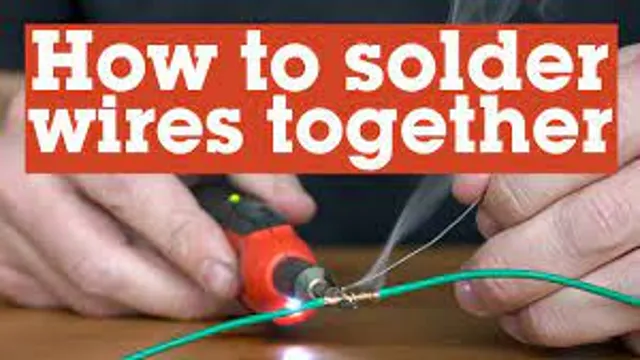
Scissors
Scissors Tools Needed: Scissors are an essential tool in every household, especially in the kitchen. They are versatile tools that can be used to cut everything from paper to meat. When it comes to investing in a pair of scissors, it is essential to choose a durable and comfortable option that will last for years.
A pair of scissors with a sharp and pointed blade is perfect for cutting through tough materials such as cardboard, plastic packaging, and even thick meat. The handle of the scissors should be comfortable to grip and sturdy enough to handle heavy-duty cutting. Apart from having a good pair of scissors in the kitchen, it is also essential to have them in the sewing kit, classroom, and office.
A small pair of scissors is perfect for detailed cutting and snipping in sewing and embroidery. For effective classroom learning, students require child-friendly scissors that are comfortable to hold and have rounded edges. In the office, a pair of sharp scissors is perfect for cutting paper, opening packages, and even cutting through thin metals such as aluminum.
In conclusion, having the right pair of scissors can make life easier and more comfortable, whether in the kitchen, sewing room, classroom, or office. Whether you are cutting meat, snipping threads, cutting through packaging, or opening envelopes, scissors are an essential tool that you should have on hand at all times. Therefore, ensure that you invest in a good pair of scissors and keep them safely stored in an accessible place for ease of use.
Preparation:
If you’re wondering whether you can wrap a car battery cable in electrical tape, the answer is yes, you can. However, it might not be the best solution in all cases. Before you wrap the cable, you should make sure that the cable is properly prepared.
First, make sure that the battery is disconnected, and both terminals are free from any electrical current before starting work on the cable. Then, gently clean the cable with a cloth and some cleaning solution to remove any dirt, corrosion, grease, or acid that might be present. Once the cable is clean, you can wrap it with electrical tape, ensuring that the tape is tight enough to hold the wire securely in place.
Keep in mind that while electrical tape can offer temporary protection against basic electrical issues, it’s not a permanent solution, and may not last long in harsh weather or high temperatures. Overall, if you’re in a bind and need a quick fix for a car battery cable, using electrical tape can be a viable option, but it’s always better to consult a professional mechanic to address the issue properly.
Wipe the cable clean of any grease or oil
When it comes to preparing your cable for use, it’s important to ensure that it’s clean and free of any grease or oil. Before you start using your cable, take a few minutes to wipe it down with a clean cloth to remove any contaminants from its surface. This is especially important if you’ve been using your cable for a while, as grease and oil can build up over time and affect its ability to function properly.
By taking the time to prepare your cable in this way, you’ll help to ensure that it lasts longer and performs better in the long run. Keeping your cable free of grease and oil is important because it helps to prevent corrosion and other types of damage that can occur over time. When you use a cable that’s contaminated with these substances, you’re not only putting yourself at risk but also putting your equipment at risk as well.
By wiping your cable clean, you can help to prevent problems from occurring and keep your equipment working properly for longer. To wipe your cable clean of any grease or oil, you can use a clean, dry cloth or a specifically designed cleaner. Simply rub the cloth or cleaner over the surface of the cable, making sure to cover all areas thoroughly.
Take your time and be gentle, as you don’t want to damage the cable in the process. Once the cable is clean, you’re ready to start using it with confidence, knowing that it’s been properly prepared and cared for.
Measure the length of the cable to be wrapped
When it comes to cable wrapping, the first step is to measure the length of the cable that needs to be wrapped. This is essential to ensure that you have the right amount of wrapping material and that it fits snugly around the cable. To get an accurate measurement, you can use a measuring tape or a ruler.
Start at one end of the cable and measure along its length until you reach the other end. Be sure to measure the entire length, even if it loops back on itself, to get a precise measurement. Once you have your measurement, you can decide on the amount of wrapping material you need and get started on your cable wrapping project.
Keeping an eye on the length of your cable and the amount of wrapping material you have will help you avoid any complications down the line, and ensure a successful project that will keep your cables organized and protected.
Wrapping the Cable:
Yes, you can definitely wrap a car battery cable in electrical tape. In fact, it’s a common practice to secure and protect the cable from any potential damage or wear and tear. Electrical tape is a convenient and handy solution that helps to keep the cable in place and shield it from external elements such as moisture, dirt, and debris.
Wrapping the cable with electrical tape is also an effective way to insulate it and prevent any possible short circuit or electric shock. However, it’s important to note that using electrical tape alone won’t fix any underlying issues or problems with the battery or cable. If you suspect any damage or malfunction, it’s best to get it checked by a professional mechanic to avoid any safety hazards in the future.
Nonetheless, wrapping a car battery cable with electrical tape is a simple and practical solution to keep it in good condition and prolong its lifespan.
Hold one end of the tape to the cable and start wrapping it tightly
When it comes to wrapping a cable, it’s essential to do it correctly to prevent it from getting tangled or damaged. One of the best ways to wrap a cable is by using a tape. To start, hold one end of the tape to the cable and start wrapping it tightly.
Make sure that the entire cable is covered with tape. It will provide extra protection to the cable and prevent it from getting scratched or damaged. Additionally, wrapping the cable tightly will help to keep it in place and avoid any tangling.
It’s important to take your time when wrapping the cable to ensure that it’s done correctly. When finished, the cable should be secure and ready for storage or transport. By using tape to wrap your cable, you can keep it safe, organized, and tangle-free.
Overlap each wrap slightly to ensure complete coverage
If you want to ensure your cables are protected and organized, it’s important to know how to wrap them properly. Whether you’re wrapping them for storage or during transport, overlapping each wrap slightly is crucial to ensure complete coverage. This means that each wrap should be slightly on top of the previous wrap, so that there are no gaps or spaces where the cable can be exposed.
By doing this, you’ll also prevent it from getting tangled. It’s important to note that the process of wrapping a cable may seem simple, but it requires attention to detail to get it right. The key is to take your time, keep the cable straight, and avoid twisting or kinking it.
With these tips in mind, you’ll be able to wrap your cables like a pro in no time!
Continue wrapping until the entire length is covered
When it comes to keeping your cables organized and tangle-free, wrapping them properly is key. This may seem like a simple task, but doing it correctly can make all the difference. First, make sure your cable is untangled and straightened out.
Start at one end and slowly wrap the cable around your hand, making sure each loop is neatly stacked on top of the one before it. Once you reach the end of the cable, use a cable tie or a twist tie to secure the loops together. Make sure the tie is tight but not too tight, as you don’t want to damage the cable.
Continue wrapping until the entire length is covered, making sure each loop is neat and even. When you’re finished, your cable should be organized and easy to store. With just a little bit of practice, you’ll be a cable wrapping pro in no time!
Testing:
“Can you wrap a car battery cable in electrical tape?” is a common question for car enthusiasts. The answer is yes, you can wrap a car battery cable in electrical tape, but it is not the best solution. While electrical tape may provide a temporary fix for a frayed or damaged cable, it is not designed for long-term use.
Electrical tape can easily become brittle or crack over time, which can lead to a potential safety hazard. Additionally, the tape can become sticky and attract dirt and other debris, which can cause further damage to the cable. It is always best to replace the damaged cable with a new one, especially for the safety of the vehicle and its passengers.
If a replacement cable is not an option, consider using a professional-grade solution, such as heat shrink tubing, that is designed for the purpose. Overall, while electrical tape may provide a quick fix, it is not a long-term solution for damaged car battery cables.
Check for any exposed wires by gently running your hand along the wrapped cable
Testing your cables is a crucial part of ensuring their safety and longevity. One way of doing this is to check for any exposed wires by gently running your hand along the wrapped cable. Exposed wires can be a potential hazard as they can cause electrical shocks or start a fire.
It’s important to identify and fix any issues with the cable before plugging it into your device. Another way of testing your cables is to use a cable tester. These testers give you a clear indication of whether your cable is working correctly or not.
They are easy to use and can save you time and money if you have a faulty cable. Testing your cables regularly is essential, especially if you use them frequently or in high-stress environments. Don’t neglect this important step in cable maintenance, as it can save you from costly repairs or even injuries.
So, don’t wait, test your cables today!
Test the car battery to confirm that the cable is secure and working properly
Car battery test Testing the car battery is essential to ensure its proper working. One of the primary reasons for testing is to confirm the cable’s security and whether it is functioning well or not. If there is a cable issue, it may cause battery malfunctioning, indicating the need for repair or replacement.
To test the car battery, you need to have a multimeter, an essential tool to measure voltage, resistance, and current. Testing the battery requires some precautions, such as turning off the headlights, radio, or any other electrical accessories to prevent a power surge. Once you confirm the precautions, connect the meter to the battery terminals where the red cable shows a positive reading, and the black cable shows a negative reading.
A reading between 14 to 17 volts indicates a good battery.
Any value lower than that requires charging or replacement. In conclusion, testing your car battery is vital, and a routine check-up can save you costly repairs down the road.
Conclusion
In conclusion, wrapping a car battery cable in electrical tape is like putting a band-aid on a broken arm – it may help in the short term, but ultimately it won’t solve the underlying problem. So while electrical tape may provide a temporary fix, it’s always best to consult a professional and address the root cause of any electrical issues in your vehicle.”
FAQs
Is it safe to wrap a car battery cable in electrical tape?
Yes, it is safe to wrap a car battery cable in electrical tape. Electrical tape is designed to insulate and protect wires from damage or electrical shock.
Can electrical tape withstand the heat generated by a car battery?
Yes, electrical tape is designed to withstand high temperatures and can handle the heat generated by a car battery.
What is the best way to wrap a car battery cable in electrical tape?
The best way to wrap a car battery cable in electrical tape is to start at the end of the cable and wrap the tape tightly around the cable, overlapping each layer slightly. Make sure to cover all exposed wires and the connectors.
How often should you replace the electrical tape on a car battery cable?
Electrical tape on a car battery cable should be inspected regularly for signs of wear or damage. If the tape is frayed, cracked, or peeling, it should be replaced immediately. Otherwise, it can be left in place until the next maintenance check.

